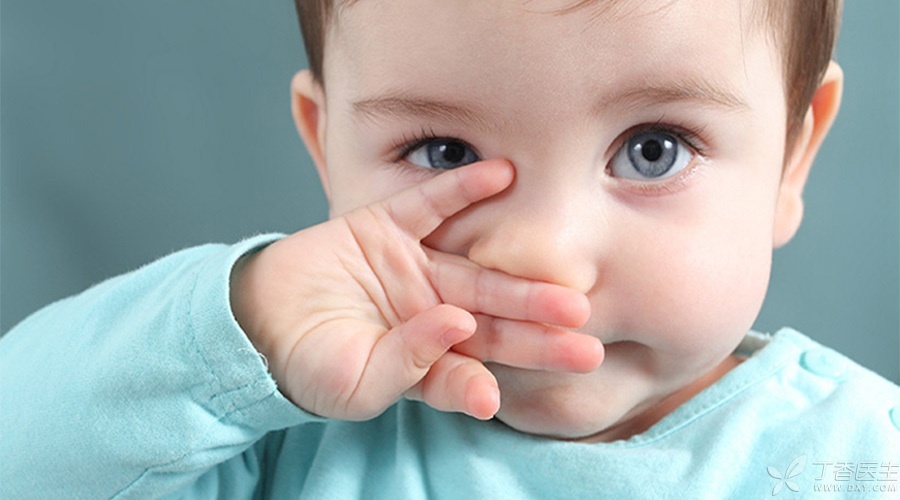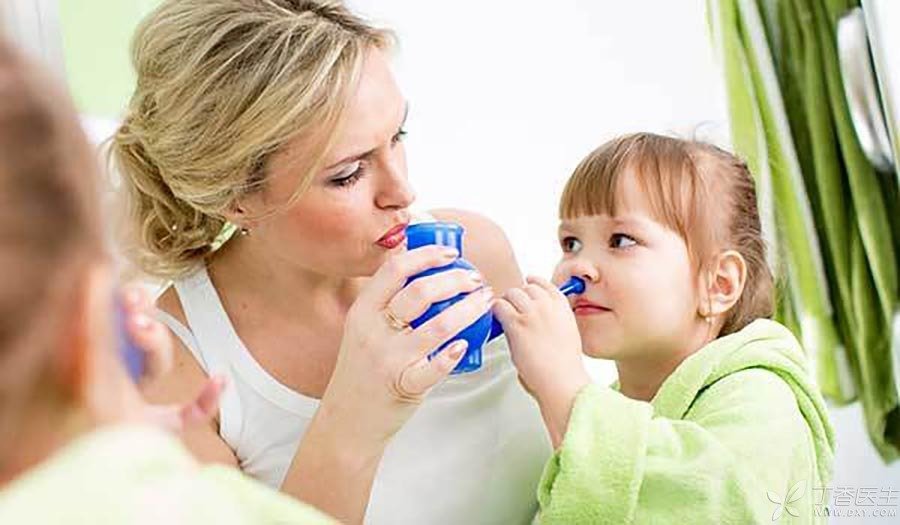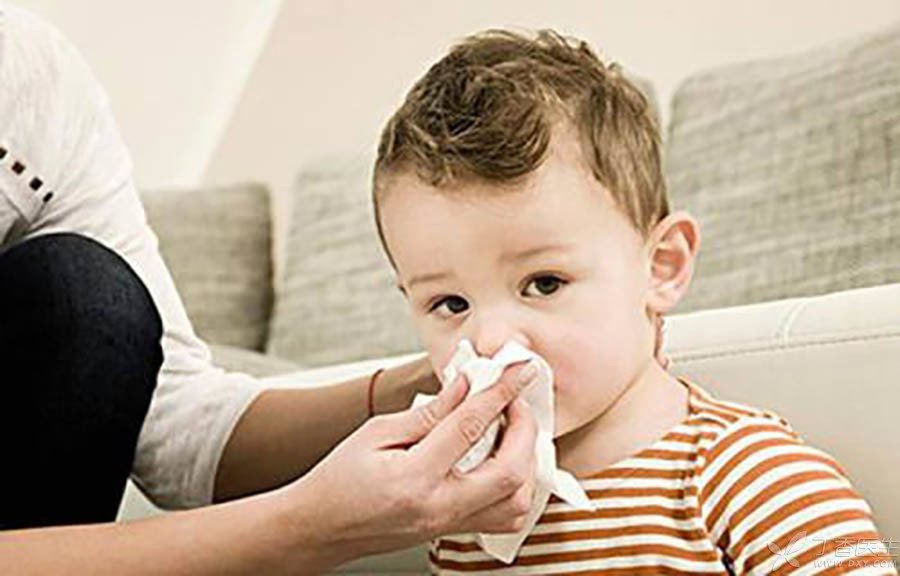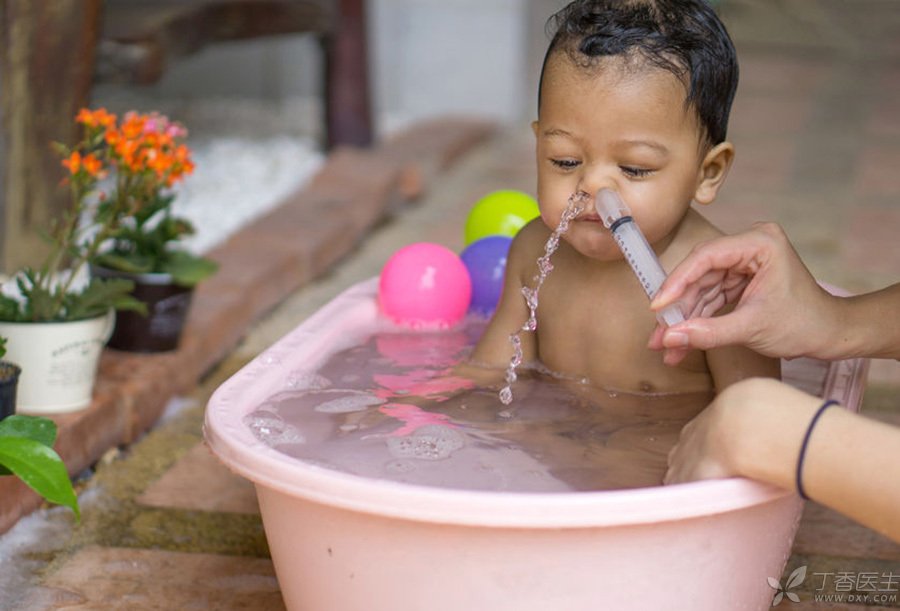
In winter, the temperature is low, and many children are troubled by nasal mucus and nasal obstruction: nasal mucus wheezes downward, parents wish to wipe it after a few steps, nasal obstruction suffers even more, and they cannot eat well or sleep well…
Nasal mucus and nasal obstruction are mostly symptoms of the common cold, which can heal itself without taking medicine, but looking at the baby is uncomfortable and the mother is worried. Is there any what way to make the child more comfortable?
Today, Dr. Clove invited pediatrician Kong Lingkai to teach everyone a wonderful way to effectively relieve nasal congestion and discomfort-physical nasal washing.
[Left Nostril Enters Right Nostril Exits], Children’s Nasal Cavity Is Easier

Nasal washing is to use sea saline or normal saline, spray it from one nostril, and then rinse the nasal mucus out of the other nostril.
The purpose of washing children’s noses is not to [cure diseases], but to make children more comfortable.
Cold or allergy will cause swelling of mucosa in children’s nasal cavity and paranasal sinuses. When children’s nasal mucus increases, it will lead to blockage of nasal cavity, laborious breathing and uncomfortable.
In addition, various viruses, bacteria, inflammatory mediators and other stimuli accumulate in the nasal cavity and paranasal sinuses. If they are not cleaned out, the symptoms will not be relieved for a long time.
The baby is too young to blow his nose voluntarily. Washing his nose in time can relieve swelling of nasal mucosa and wash away these dirty things.
Isn’t it amazing and surprising? There are so many dirty things hidden in the child’s small nasal cavity! (It’s really cute and disgusting)
Let’s look at the changes inside the nasal cavity during nasal washing.
By washing the nose, irritants such as nasal mucus, allergens, viruses and bacteria can be washed away, the concentration of local inflammatory media can be reduced, the air flow can be increased, and the child can breathe smoothly.
When do you want to clean your nose?
As long as the child’s nasal mucus is large and thick, causing nasal congestion or discomfort, he can wash his nose.
Whether it is allergic rhinitis or infectious rhinitis, whether it is viral infection or bacterial infection, it is applicable to effectively improve nasal congestion, nasal mucus, nasal congestion and other symptoms.
However, if the nasal mucus is clear water, it can flow out by itself. At this time, it is not necessary to wash the nose and wipe it.
Children of different ages pay attention to nose washing methods.

1. Newborns and infants
Babies under 1 year old are recommended to wash their noses with saline nasal drops.
Let the baby lie on his side, wash the upwards nostrils with nasal drops, pay attention to the nasal cavity, not the nasal septum (cartilage in the middle of the nostrils), just squeeze the saline clean with [biu], wipe the nasal mucus out of the baby, then lie on his side and wash the nostrils on the other side.
Remember to ensure that the flushed nostrils are always on it during operation.
In addition to nasal drops, babies can also use sea saline spray, nasal suction ball or syringe nasal washer to wash their noses.
After the baby is slightly older and can sit, he can choose to sit and wash his nose, just let the child lower his head slightly forward, to ensure that nasal mucus can flow out, and try to keep the child’s mouth open, so that the pressure in the nasal cavity and ears of the child is not so great and he can be more comfortable.
2. Children (1 ~ 3 years old)
At this time, children can choose syringe type or extrusion type. Note that if children have not been exposed to nose washing, they may not be willing to let you wash them. This requires attention to methods and strategies.
When washing your nose, you should also let your child open his mouth or make a [ah] sound all the time to make it more comfortable.
3. Older children over the age of 3
If the child’s nasal mucus is sticky or thick, the amount of saline may not be enough for syringe operation, so it is necessary to use extrusion bottle type, and the specific posture is the same as the above method.
How to Choose Nasal Drop Products
1. Nasal drops:
Gifrer in France, Little Remedie in the United States, all other brands will do, the same.
2. Sea water spray:
PHYSIOMER, STERIMAR, LITTLE REMEDIES, Zambang Lume, Norsch, etc.
3. Syringe nasal washer:
Syringe-type nasal washer is not sold in China, and Nasaline junior is widely used abroad.
4. Extrusion bottle type:
You can choose Nasopure, Neilmed, PARI and Nose Coke.
The above nasal washing devices are equipped with special saline for nasal washing. Just buy them directly. Do not configure them at home. It is unhygienic.
Don’t wash your child’s nose with clear water. The concentration of clear water is different from that of nasal mucosal secretions, which will damage nasal mucosa.
Can you choke when you wash your nose? Can you get otitis media?

When I recommended nose washing to many parents, everyone paid more attention to safety issues:
1. Will children choke when washing their noses?
Children do feel a little uncomfortable when washing their noses, but this degree is tolerable.
As long as the posture is correct, you won’t choke. Lean the child’s head forward, don’t lean back, and quickly spray water into the nasal cavity.
2. Will washing the baby’s nose lead to otitis media?
Many parents will worry that when washing their noses, they will be under great pressure, which will easily cause otitis media by rushing nasal mucus into their ears.
This kind of worry is unnecessary.
There is a tissue between the nasal cavity and the ear called eustachian tube, which can be used to adjust the internal and external pressure of the ear by [opening-closing]. The opening of the nasopharynx of the eustachian tube is only opened occasionally when opening the mouth, yawning, etc., and the rest of the time is closed, so it is also closed when washing the nose and will not flush the nasal mucus into it.
This is also why when we wash our noses, we let our children open their mouths or shout [ah ah ah]. The purpose is to open the eustachian tube a little, so that the pressure inside and outside the ears will be consistent and more comfortable.
When nasal cavity is inflamed, the opening of eustachian tube in nasopharynx is mostly closed due to swelling, and nasal mucus will not be sprayed in.
Even if the nasal mucus happens to rush into the ear, it will be discharged due to the excretion function of the eustachian tube into the nasal cavity, so there is no need to worry about this problem.
3. What if the child does not accept nose washing?
Parents can operate the demonstration to show their children, or play house and show dolls. When they are older, they can also show their children videos and explain while watching.
It is suggested that positive guidance should be given as far as possible and not forced. If it causes [bad experience] to the baby, it will be difficult to try again later.
The children really don’t want to wait for the baby to grow up and try again. Some babies will rush to do it after washing their noses several times and feel very comfortable.
